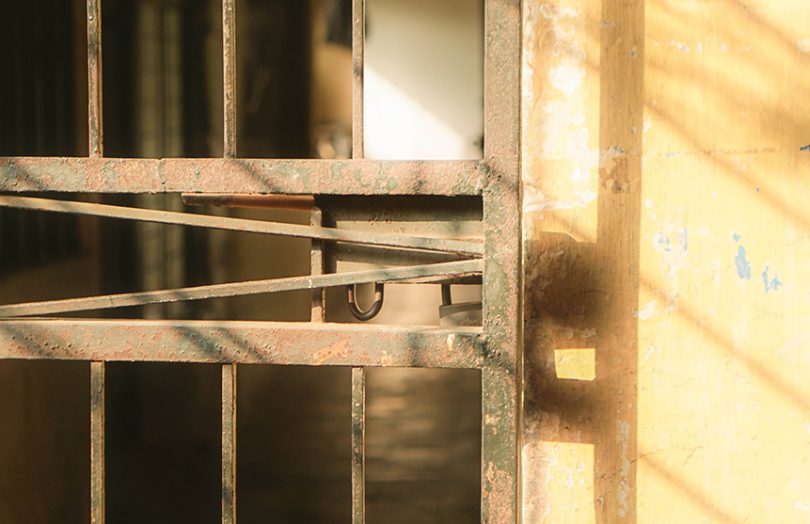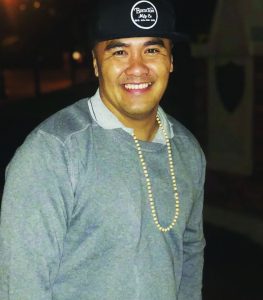by James Gross
As surely as there is a voyage away, there is a journey home.
—Jack Kornfield, After the Ecstasy, the Laundry
The premise behind the Buddhist precepts is freedom from suffering, fostering wellbeing—no matter how invincible unskillful words and actions leading to suffering may appear.
Incarceration is a strong case in point. Not only is an incarcerated person surrounded by conditions that are often purposely created to cause suffering, resources for dissolving attachment to conditions and thus leading to true freedom and well-being are non-existent.
Despite this, there are instances where incarcerated folks have found spiritual practices, the nobility, the human dignity, of which the Buddha taught. A demonstration of the Buddhist analogy of a lotus flower flourishing, even in the mud. This loosens the yoke of negative conditions and attendant suffering and creates sufficient space for meditation in numerous forms, mindfulness, insight, and others, to arise, including Buddhadharma.
My formerly incarcerated dharma brother, Edwin Paragas, is an example.
Eddie and I met at Ironwood State Prison deep in California’s Mojave Desert, where I offer monthly Buddhist meditation teachings and practice, pre-COVID. Eddie first began his Buddhadharma practice while incarcerated at Sacramento State Prison.
—James Gross
Editor’s Note:
For those unfamiliar, the word “sangha,” in Buddhist terms, may be loosely defined as a community of practitioners.
“Vipassana” is a Buddhist practice of meditation that cultivates “a clear awareness of exactly what is happening as it happens.”
James Gross: Eddie, please give us some background on your pre-practice life.
Edwin Paragas: Well at sixteen I was full of wounds that couldn’t carry my hurt. I did everything I could to mask the pain. From anger, drugs, unhealthy attachment/acceptance, criminality, and the delusion that I can numb my feelings. All my choices were rooted in my toxic learned behavior. Those factors and the apathy that I developed had gotten me to commit the most heinous action one can choose, to take a precious life.
JG: How is it, do you find, that your early life created conditions that led to your suffering as a sixteen year old?
EP: Because of the trauma and wounds, I conditioned myself to believe that my needs are more important than other people’s needs. Combined with negative peers and substances, in time my choices conditioned me to believe my delusional state.
JG: How did Buddhadharma practice come to be important to you?
EP: After committing my crime and starting incarceration, I felt to truly have remorse, I had to empathize with my victim by putting myself in his shoes. Since he was a Buddhist attending a sangha, this was the first step I took. It is in the sangha where I found my liberation and enlightenment. Buddhist practice taught me compassion for others and self, to sit in the fire of being uncomfortable, looking through the window of what’s really real and being enlightened by not doing any harm.
JG: How did your empathy arise? How did you first recognize empathy was a key to not only to your liberation, but to the bond of which you speak—between a Vipassana practitioner, your victim, and yourself establishing your intention to start practice? Are there any words, thoughts, bodily sensations, or feeling tones that accompanied your practice “stream entry?”
EP: My empathy arises by putting myself in my victim/survivor shoes. Recognizing the suffering manifested empathy and remorse. Now when I am doing harm, like not practicing right speech, I have tightness in my stomach and that is like my stop sign for what I am doing.
On transfer to Ironwood, Eddie joined our Yard D Boundless Freedom Project sangha/group. Eddie’s sincere and disciplined practice became a great support for himself and his inside sangha members. As his parole hearings came up, he demonstrated his accountability, transformation, reduced reactionary responses, and renewed well-being.
JG: I felt such great positive energy among our Yard D sangha. What were highlights for you?
EP: The truly genuine connection I developed. We connected by recognizing our suffering and recognizing we are just trying to navigate to dealing with our suffering. This part was enjoyable because we stopped judging each other. This was how we disarmed hostilities towards the people I connected with.
JG: What a great observation of the power of meditation practice to generate wellbeing. In the Yard D sangha, and in my other prison meditation groups, it was not uncommon to find the benefits of practice, especially well-being, to grow and expand to inform mindfulness of thought and action, leading to insight into the root causes and accountability for harm to self and others. This was a key factor for demonstrating folk’s readiness for release and coming home. How did you see these insights led your parole board and others to view you as ready for release?
EP: The elements leading to being suitable for parole are insight, responsibility, remorse, and coping skills. Insight: I know what led me to commit my crime so I am aware of it to catch it and not commit any more harm. Also, I need to look at my past without judgment, and in turn I can invoke my healing narrative. Responsibility: see how things are, as it is and take ownership. Remorse: empathy and remorse is the true human deterrent to not committing the same harm. Coping skills: do we have enough skills to put space between thoughts, emotions, and behavior? That space, between reaction and response, is needed to make sure we are not impulsive anymore. My practice was what I leaned on most when I presented myself as not being a threat to society.
JG: If there was a magic pill anyone could take to overcome the suffering of committing a crime and suffering incarceration, I suspect all affected would be lining up for the prescription. Without this, instead, you and a growing number of incarcerated are finding a spark, an intention, to rise above the circumstances and transform tragedy into healing and wellbeing for offenders, victims, and all folks whose lives they touch. This is hard, gritty work. Tell us the story of how you found your spark and keep it alive.
EP: If I do have the power to give a magic pill for the incarcerated folks, it will be “Self-Compassion.” The lack of it filters the narrative of the story in which we see ourselves. For me, I struggled with my actions and did everything I could to avoid the truth of what I had done. But once I developed self-compassion I was able to see my worth and I can start to see I am not the worst version of myself. Truly believing that I am compassionate becomes the best version of myself and colors my conscience. Also, I wholeheartedly advocate for Self-love, because Self-love cultivates a healing narrative, wellbeing. Only through a healing narrative could I face the tragic event I caused. Once I had the foundation to face it and not revert back to toxic shame, I was able to accept it, which in turn manifested responsibility, accountability, and remorse.
JG: So often, we speak of our experiences as thought creates them—as self-centered, often reactive, stories of who we are. This can happen without our conscious awareness picking up on it. In meditation practice, we are invited to also pay attention to how our bodies and hearts (feeling tone) respond to our experiences as well as the mind, consciously and subconsciously. How have you related to all three aspects of mind/body/heart?
EP: Besides the substances, one element that plagued me was the constant suffering I endured myself, due to my mind. My mind was in a constant battle to avoid being uncomfortable. Being uncomfortable is traumatic in a sense. Being uncomfortable is like an extra prick in my wound that had me exhausted.
My body was another issue that hindered me. The overlapping trauma had my body tensed, which made experiences unfold in a hyper-vigilant state. Being over-reactive and thinking errors was not a healthy combination.
With regards to my heart. I was out of tune. Sometimes growing up I stopped expressing my heart ‘cause it was never validated.
But now my mind, body, and heart are aligned. Awareness is key, and compassion to self is crucial for me to fall back in love with myself. This is my enlightenment and liberation.
JG: What roles do your victim and their loved ones play in your restoration of well-being?
EP: Well, the reason I became a Buddhist was to honor my victim. My victim was Buddhist. I wanted to try to put myself in his shoes. This helped me to fully nourish the remorse I needed in order to feel empathy so it will deter me from ever harming anyone else. I wear a beaded bracelet to remind me if I entertain the old thought patterns, it can lead to me acting out a toxic way to express my needs. I look at the beads, think of my victim, ask if this is the way to honor him—and that progression always brings me back to my pure land state of mind.
JG: In the practices we have shared—breath meditation, metta or lovingkindness, mindfulness and insight—which have landed with the most impact for you? Describe how a practice you use affected you inside and now as a free man.
EP: The most impactful part has to be mindfulness. Because of my past trauma, I had a filter that colored my consciousness. I had a hard time seeing what is and that affected my choices. But mindfulness helped me with non-judgment, especially for myself. This cultivated loving-kindness and insight. This helped me inside and out. I facilitated groups inside, and one element that is so profound is the way we think which leads to even more suffering. Our conditioning is our obstacle to wellbeing.
JG: Tell us a little about your journey’s breakthroughs and setbacks. What was learned?
EP: My breakthrough is that it’s okay to feel discomfort. My past trauma, my original pain from childhood, hurts so much, I did everything I could to cover it. Most of it from secondary pain—drugs, violence, gangs—all actions to express my unmet needs. But in time, being okay and holding space with non-judgment, I was able to accept the moment and respond to the moment without reacting to it. My reaction is usually from toxic conditioning I shaped in my brain. The obstacle is that the old conditioning likes to surface at the wrong time.
JG: What does well-being mean to you today? And how is it different from your earlier experiences? How do you demonstrate well-being?
EP: Well-being to me is balance. Balance is being kind to myself. The tension, hyper-vigilance, overly sensitivity—these things cloud judgment that molds the view of self and world. I stopped running, I stopped making things a crisis. That space between thoughts, feelings, and action is a life-saving skill.
Author James Gross is a teacher drawing primarily from the Theravada and Zen Buddhist lineages. He offers contemplative and secular classes and practice instruction at California prisons, for LGBTQ programs and for individuals.
At sixteen years old, Edwin Parga was sentenced to 20 years to life in an adult prison for committing murder. He served 24 years and was released on November 26, 2019. He now works with Healing Dialogue and Action, a non-profit organization that engages in restorative justice, to offer “an opportunity for transformation for victims, offenders, and families.”
Gross’s interview with Edwin Parga was first published in Parabola Magazine. Four times a year for over 40 years Parabola has gathered the wisdom of the world’s spiritual traditions to illuminate the central questions of life, and published their findings. Their current issue, Wellness: Parabola Volume 46, No. 1, Spring 2021, is available now.
Image at top courtesy of Pham Yen on Unsplash.com


